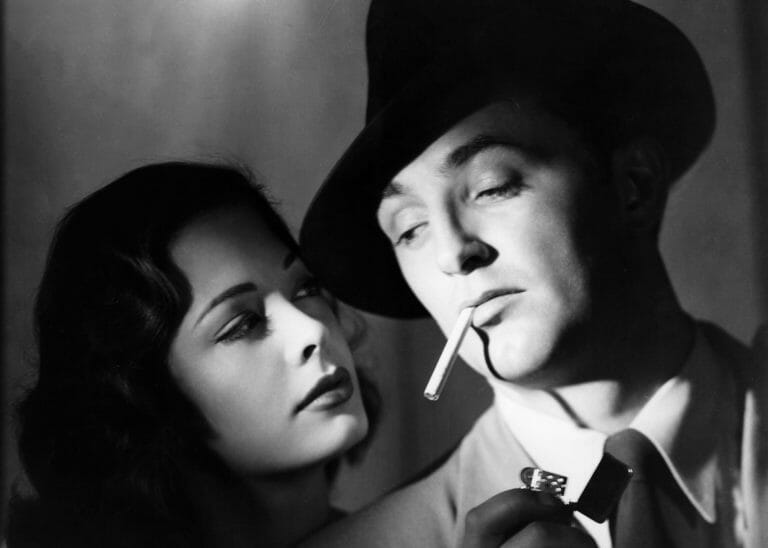By Tessa Chudy · December 9, 2015

Film Noir is one of those things that never really goes out of style, and it has the added (if occasionally perplexing) benefit of fluidity which allows it to move beyond both its original historical and generic contexts, and even national boundaries. Film Noir can be adapted to just about any genre – western, sci-fi, etc, etc and can be set in any country or time period. But there are a core group of elements that define Film Noir. These elements can all be present in a Film Noir, but sometimes just one or two of these elements can be strong enough to create the tone and mood of Film Noir.
Jump ahead for a list of several of the most common features of Film Noir, which we’ve compiled for you convenience.
Read More: If Looks Could Kill: The Best Modern Femme Fatale Movies
Overview/Contexts
Film Noir literally meaning dark film is the term coined by French critics to describe the creeping darkness that they saw in a cycle of American films beginning in the 1940s. This darkness was a reflection of the social and cultural uncertainty that pervaded WWII era America. The darkness was expressed visually in the dark imagery and expressionistic shadows and in the subject matter which has been traditionally crime/murder stories. Traditionally the setting of Noir has been urban, hard edged cities that never sleep. The classic era of Film Noir fell roughly between 1940 and 1960, when it morphed into Neo-Noir.
Neo-Noir falls into three distinct categories retro – recreating the setting and elements of classic era Film Noir, revisionist – where the conventions are pushed to their limits and/or transplanted into a different genre, and the straight Neo-Noir which updates the elements of Film Noir to a contemporary time and place.

Darkness
The thing about darkness in Film Noir is that it is not just a physical thing, even though it seems that much of the action in classic Film Noir occurs at night, the darkness and its expressive shadows is a reflection and manifestation of the both the psychological and emotional darkness that besets the characters and of the true nature of the treacherous reality that they inhabit as in Out of The Past (1947) where long stretches of the movie occur at night, but even the daylight scenes are un-usually dark, and reflect the nightmarish past that the central character attempts to escape.

Fatalism
This may be going a bit deep but it is important to remember that the world contained within Film Noir is a bleak one, happy endings are rare and the general mood is one of cynical pessimism in the face of an uncaring universe.

Voice-Over
A common narrative device employed in Film Noir is the voice-over where one of the characters narrates their story. The voice-over gives immediacy to the story and can be seen as a way for the character to try and make sense of what has happened to them. The voice-over can be the conventional detective narrating how a blonde walked into their office or something a bit more dramatic like the corpse in the swimming pool in Sunset Boulevard (1950) narrating the events that led to his floating face down in that pool.

Flashbacks
There is a strong sense that the past is inescapable and/or more powerful than the present and this can be underlined by the frequent use of flashbacks. The past for many Noir characters is eternally returning and they can never escape its pull. Flashbacks also serve to undermine the stability of the narrative especially when narrated by different characters presenting alternative versions of the narrative, an example of this is The Killers (1946) where an insurance investigator interrogates several characters and their stories told in flashback form the core of the narrative.

Flawed Protagonist
Often the central characters of Noir are detectives, and it can be hard to separate the detective (the classic image is of Humphrey Bogart in his trench coat and hat, cigarette dangling from his lips, playing either Sam Spade or Philip Marlowe), from the Noir. But while private detectives and tough cops are common protagonists in Film Noir the general guide is imperfect. The Noir male can be flawed, weak, stupid, or a combination of all three, he can be a success or a failure, but he cannot escape his mistakes or the nightmare that they have landed him in.

The Femme Fatale
The deadly woman at the heart of many Film Noirs is fatal to others and often to herself (in Neo-Noir this has changed somewhat). The femme fatale is seductive, beautiful and treacherous, often much stronger than the male characters, she’s been around a few times and is out to get hers at any cost. The femme fatale can be completely ruthless and amoral (think The Last Seduction (1994)) or she can be a more of a tragic figure like Faye Dunaway in Chinatown (1974).

Read More: Behind the Venetian Blinds: A Peek at Great Film-Noir Movies